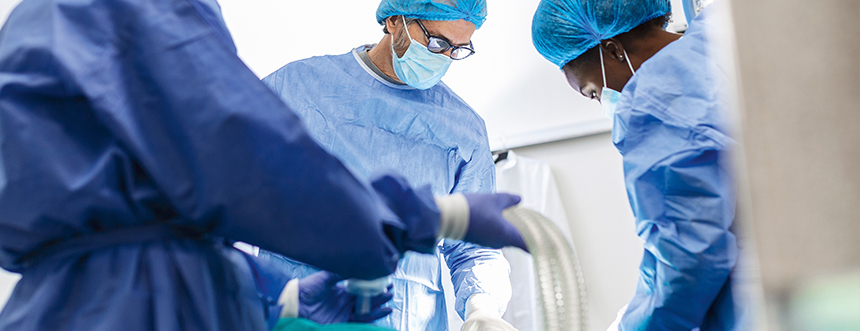LitAlert #53

Percutaneous Tracheostomy
Percutaneous dilatational tracheostomy (PDT) has become standard of care in ICU and is increasingly favored in critically ill patients due to its minimally invasive nature. However, it’s crucial to recognize situations where surgical tracheostomy (ST) might still be the better option. This article reviews the indications, timing, techniques, and complications associated with PDT. When considering indications for PDT, it has been observed that as operators gain more experience, the list of contraindications tends to shorten. Evidence does not show a significant benefit of percutaneous tracheostomy performed early (<10 days) over late tracheostomy (>10 days). A meta-analysis of 17 randomized controlled trials (RCTs) including 1212 patients found that the incidence of wound infection was significantly lower at 2.3% with PDT, compared to 10.7% with ST. This reduction is often attributed to the minimally invasive nature of PDT. A 2014 meta-analysis by Putensen et al. reviewed 14 RCTs with 973 patients. They found PDT had fewer cases of stomal inflammation and infection, but more technical challenges compared to ST. Major guidelines recommend PDT over ST in critically ill patients. Furthermore, complications are similar between PDT and ST, with patient selection being crucial. Percutaneous techniques can be performed in various ways. However, no single technique has been proven superior. PDT is a well-established procedure for critically ill patients, with success dependent on experience and proper patient selection.
Which percutaneous tracheostomy method is better? A systematic review
Recently, various methods of percutaneous dilatational tracheostomy (PDT) have been described with theoretical benefits, however there is insufficient data to determine which percutaneous tracheostomy technique is superior in terms of insertion success and complication rates. Therefore, this meta-analysis aimed to evaluate various percutaneous tracheostomy methods for their success rates and safety. The multiple dilator, single progressive dilator, balloon dilator, forceps dilator, translaryngeal dilator, and screw-like dilator were analyzed. The systematic literature search was performed in the MEDLINE, LILACS, Embase and Cochrane Collaboration databases and fourteen randomized controlled trials (RCTs) which directly compared two percutaneous tracheostomy methods were included. The single progressive dilator was found to be easier for surgeons (risk difference of 14.7% [95% CI 8 –21.5]) but had more minor bleeding events (risk difference of -6.3% [95% CI - 13.58 to 0.8]). However, there was no significant difference in major bleeding events. Due to statistical heterogeneity and limited data, comparisons with other outcomes were challenging. While the single progressive dilator is easier and associated with more minor bleeding, the composite literature is not enough to determine the best one.

Effect of open surgical and percutaneous dilatational tracheostomy on postoperative wound complications in patients: A meta-analysis
Both open surgical tracheostomy (OST) and percutaneous dilatational tracheostomy (PDT) have their advantages and disadvantages. While OST generally has fewer life-threatening complications, PDT tends to result in less stomatitis and infections; however, strategy selection has mainly been based on surgical preference due to limited and conflicting safety data. Therefore, this systematic review aims to compare the effects of OST and PDT on postoperative wound complications. The meta-analysis included 11 randomized controlled trials from the Cochrane Library, PubMed, Web of Science, and Embase databases, in between 1995 and 2022. The trial involved 1,338 tracheostomies, with 688 patients receiving OST and 650 undergoing PDT. PDT was associated with a lower incidence of wound infection (OR, 4.46; 95% CI: 2.84–7.02) and reduced bleeding (OR, 2.88; 95% CI: 1.62–5.12). However, there was no significant difference in operation time between OST and PDT (MD, 4.65; 95% CI: −1.19–10.48). Due to the lack of specific data, this trial could not assess the impact of certain factors on postoperative tracheostomy outcomes. In conclusion, PDT results in fewer postoperative wound complications compared to OST.
Safety of Percutaneous Dilatational Tracheostomy in Critically Ill Adults With Obesity: A Retrospective Cohort Study
Obesity has traditionally been seen as a relative contraindication to percutaneous dilatational tracheostomy (PDT) due to challenging anatomical landmarks and increased skin-to-trachea distance. As familiarity with PDT technique grows, many practitioners are extending its use to obese patients, employing techniques like bronchoscopic guidance and extended cannulas to mitigate risks. The primary aim of this retrospective cohort study was to evaluate the complication rates associated with PDT in obese patients compared to non-obese patients. The analysis included 279 patients between 2016 and 2023, where 193 were non-obese patients and 86 were obese. Obesity was classified according to the World Health Organization (WHO) standards: class I obesity being a BMI ≥ 30 and <35, class II obesity a BMI ≥ 35 and <40, and class 3 obesity ≥40.11. There was no statistical significance in overall complication rates between non-obese patients and obese patients (7.3% vs. 10.5%, respectively, p = 0.370). The complication rates for obesity classes I, II, and III were 8.9%, 13.3%, and 13.3%. Overall, there were no cases where the procedure had to be converted to an open procedure and there were no mortalities. The authors conclude that this is one of the largest studies to date reporting on PDT in patients with obesity.
Disclaimer:
The content of the journal articles is the opinion of the article authors and does not necessarily reflect the opinion of Atos Medical AB nor any of its subsidiaries. By providing this material it is not implied that the articles nor its authors are endorsing Atos Medical AB or Atos Medical AB products. Nothing in this material should be construed as Atos Medical AB providing medical or other advice, making any recommendations or claims, and is purely for informational purposes. It should not be relied on, in any way, to be used by clinicians as the basis for any decision or action, as to prescription or medical treatment. When making prescribing or treatment decisions, clinicians should always refer to the specific labeling information approved for the country or region of practice.
LitAlert summaries of journal articles are not exhaustive. For full content, please see the actual publication. Suggestions and requests to: clinicalaffairs@atosmedical.com.